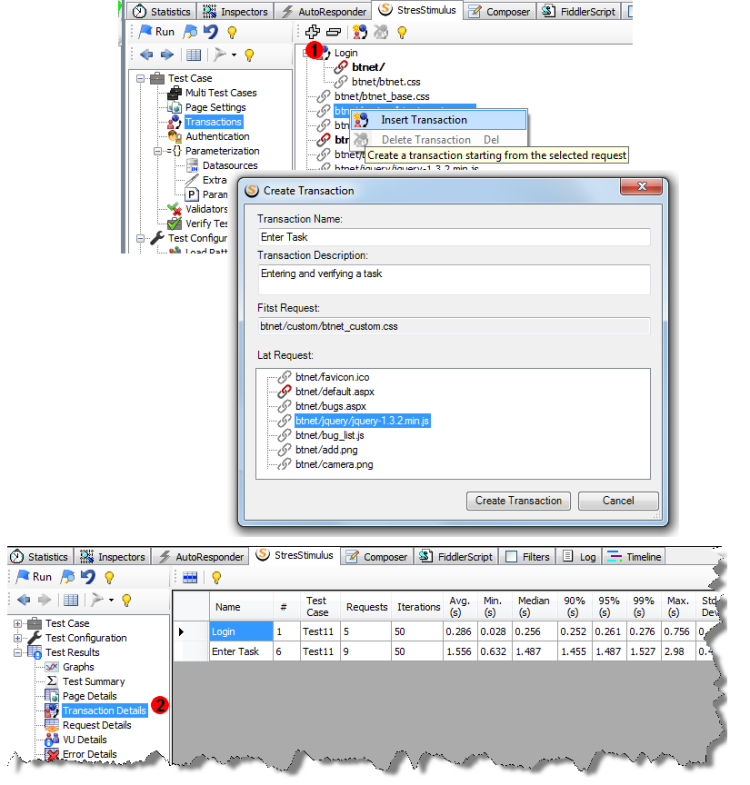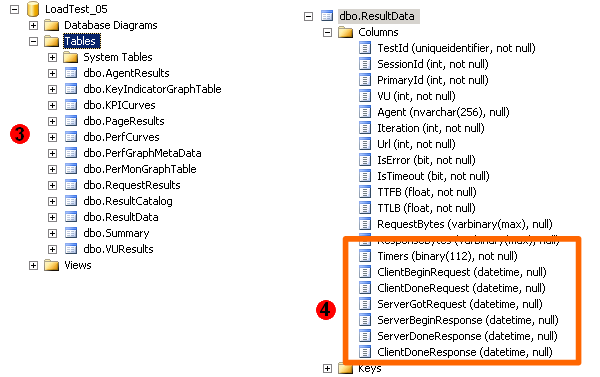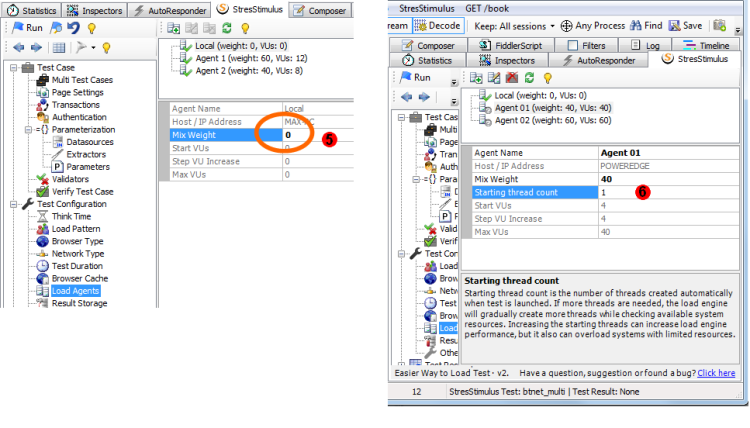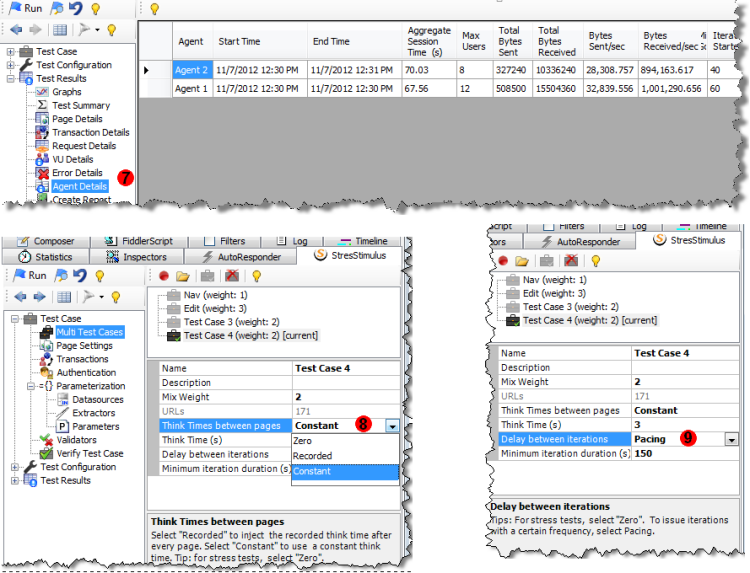1. Transactions. A transaction is a custom set of consecutive requests. It is used to determine performance characteristics of a specific business transaction that includes several user actions.

2. Transaction Details. All performance characteristics available for individual pages are also available for transactions now. Transaction details can be included into the final HTML report.
3. The SQL Server database structure is simplified and opened for external analytical tools. In the previous versions, a separate set of tables are created for each individual test-run and for each agent. As a result, a large number of tables are created. This made it virtually impossible to create consolidated custom reports when using an external analytical tool. In 2.5, the total number of tables is fixed and is reduced to 13, as shown below, which makes it easier to create custom reports.

4. The raw timers data is converted from binary into a readable format. In the Timers field, ResultData table stores multiple timers for every HTTP session that are used to calculate all time-based performance metrics. The Timers field is encoded in binary unreadable format. In the new data structure, each of the 6 timers are stored in a designated readable field, so the custom reporting system can access them. The new timer fields are shown on the figure above. fiddler timers are described here: http://fiddler.wikidot.com/timers
5. The option to distribute All VUs to one or several remote agents. In the previous version, controller's mix weight could not be set to zero. In v 2.5, to exclude controller from the load generation, set the mix weight value for the controller to zero, and distribute all VUs between agents.
 6. Load engine threat settings are configurable for every agent. In the previous versions, the starting thread count was configurable only for entire test. In 2.5, thanks to a more granular object model, the starting thread is configurable for every agent. This allows optimizing the use of hardware resources, when agents run on different hardware.
6. Load engine threat settings are configurable for every agent. In the previous versions, the starting thread count was configurable only for entire test. In 2.5, thanks to a more granular object model, the starting thread is configurable for every agent. This allows optimizing the use of hardware resources, when agents run on different hardware.
7. Added the Agent Details section and the option to include the performance metrics for each agent into the consolidated HTML report.

8. Think time is now configurable for each test case separately.
9. To issue test iterations with a frequency configured for each test case separately, a pacing option is added for each test case.
10. Datasets can now be shared between all test cases in the test. In previous versions, if a datasource is used in two test cases, it has to be added twice. V2.5 removed the data redundancy.
To navigate to other parts of the v2.5 release notes, click the links below:
V2.5 beta is available for download here.